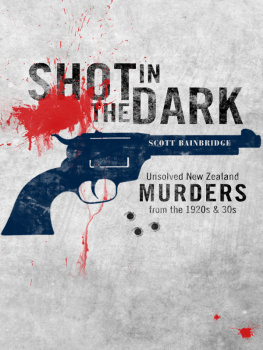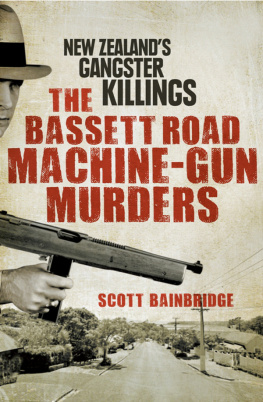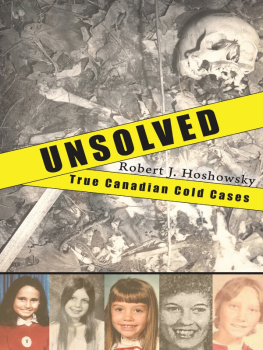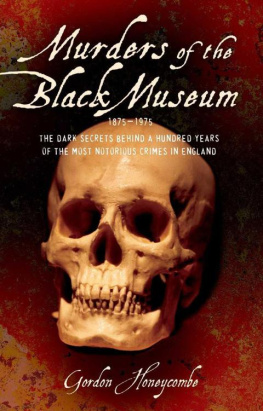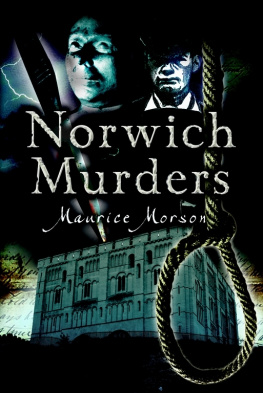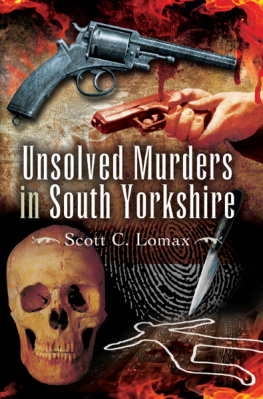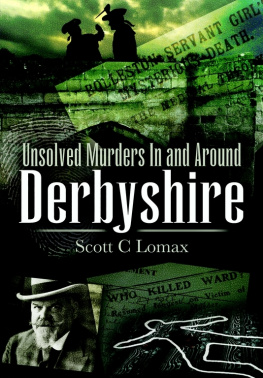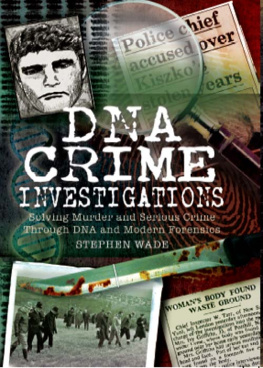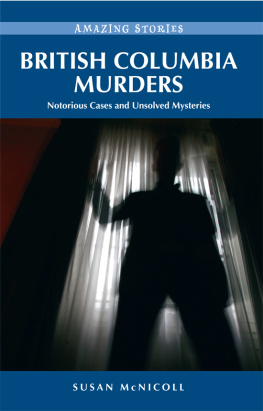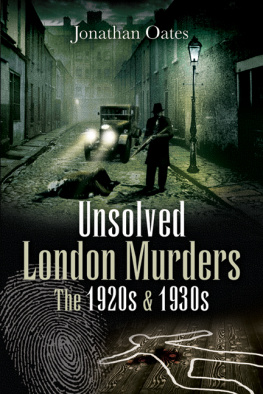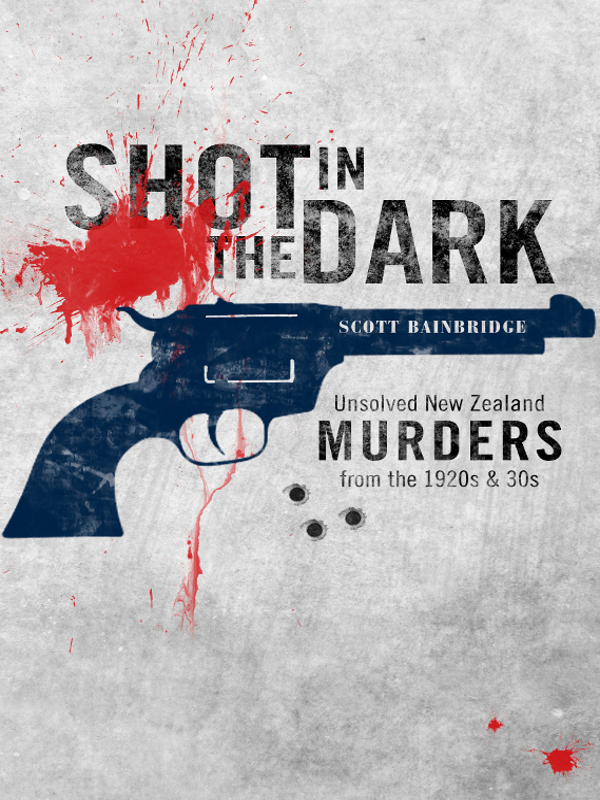

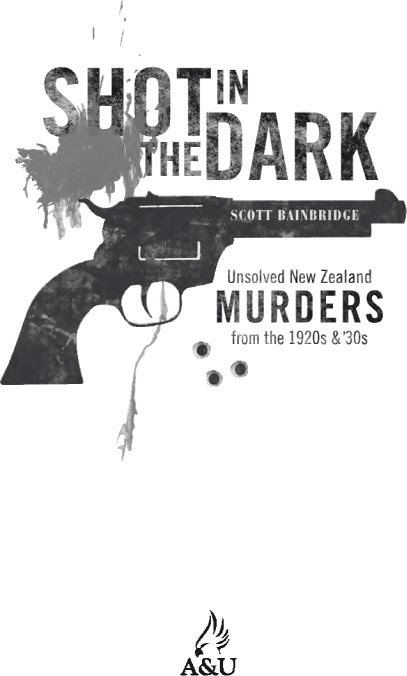
First published in 2010
Copyright Scott Bainbridge 2010
All rights reserved. No part of this book may be reproduced or transmitted in any form or by any means, electronic or mechanical, including photocopying, recording or by any information storage and retrieval system, without prior permission in writing from the publisher.
Allen & Unwin
83 Alexander Street
Crows Nest NSW 2065
Australia
Phone: (61 2) 8425 0100
Fax: (61 2) 9906 2218
Email: info@allenandunwin.com
Web: www.allenandunwin.com
National Library of New Zealand Cataloguing-in-Publication Data
Bainbridge, Scott, 1969
Shot in the dark: unsolved New Zealand murders from the
1920s and 30s / Scott Bainbridge.
Includes bibliographical references.
ISBN 978-1-877505-02-7
1. MurderInvestigationNew Zealand.
2. Cold cases (Criminal investigation)New Zealand. I. Title.
364.15230993dc 22
Designed and typeset by Janet Hunt
Printed in Australia by Griffin Press
10 9 8 7 6 5 4 3 2 1

For Noel and Ruby
Contents
New Zealand embraced the dawn of the Roaring Twenties with hope. The country had endured the loss of some 18,000 soldiers during the Great War (191418) leaving very few families untouched by the conflict. Following the war, the Spanish influenza epidemic swept mercilessly throughout the dominion killing more than 8,500 people. Despite the massive effect these tragedies had on the countrys 1.2 million people, the old adage the only way is up prevailed.
In Europe and the United States the coming of the 1920s brought social, artistic and cultural change that saw the era become known as the Roaring Twenties and the Jazz Age. In the United States this new age was somewhat tempered by the advent of the Prohibition era. Change was not quite so rapid or all encompassing in New Zealand but the country was not left behind in the progress. The inter-war years were a significant period in the history of our country.
The 1920s began with the government spending 26 million to settle around 10,500 returned servicemen as farmers on one million hectares of Crown and private land. Farm production flourished with the advent of electrification in milking sheds, the availability of tractors and the application of artificial fertilisers. The economy experienced a post-war boom. Exports of dairy products and meat to England provided many farmers with a high standard of living. Millions of trees were planted in the central North Island in what was a visionary step towards prosperity. Despite this new prosperity, falling export prices led to severe recessions in 19212 and 19267 creating significant gaps between rich and poor.
The 1920s also saw significant urbanisation and at the end of the decade 60 per cent of the Pakeha population lived in urban areas. At the same time, 90 per cent of Maori still lived in rural areas.
During the 1920s, the self-proclaimed prophet Tahupotiki Ratana set out on a mission to preach the gospel to Maori and unite them under God. He attracted a huge following and his church soon held considerable political influence. In 1924, Ratana took a 30,000 signature petition to parliament calling for the ratification of the Treaty of Waitangi.
Reform Party leader, William Massey served as prime minister from 1912 until he died in office in 1925. His belief that farming was the key to a stable economy earned Massey the nickname Farmer Bill. This dogged belief in the importance of farming meant that Massey regularly found himself off-side with other sectors of industry.
The 1920s saw two royal tours take place. The first, in 1920, was the highly anticipated visit of Edward, Prince of Wales (the future King Edward VIII), who toured to thank New Zealanders for their contribution to the war effort. In 1927, the Duke of York (the future King George V) and his wife spent a month travelling from Auckland to Bluff.
Other distinguished visitors included famed Russian ballerina, Anna Pavlova, in 1926. Her visit inspired a Wellington chef to make a dessert in her honour. Australian aviator Charles Kingsford-Smith became the first aeroplane pilot to fly across the Tasman in 1928 with thousands greeting him upon arrival at Christchurchs Wigram aerodrome.
This was an era of power and speed. Major hydroelectric projects were established bringing electricity to homes all round the country. Wagons and carts were still prevalent in rural areas but by 1925 private motor vehicles numbered 100,000. This number doubled within five years. Rail travel also improved and air travel began to be seen as a possibility.
Technological advancements made household appliances attractive. Shacklock introduced the Orion electric range and you could buy the worlds best wirelessa Radiolafor a 5 down payment at Farmers Trading Company.
The first radio stations began broadcasting in 1922 and the airwaves were rich with American jazz. The Charleston was the dance of the era and silent movies became a popular form of entertainment. In fashion, the flapper look was in vogue with thoroughly modern young women wearing their hair in short bobs and donning sleeveless low-waisted dresses that could be scandalously raised to knee-level.
In the sporting arena, Gisborne boxer Tom Heeney became New Zealands best known sportsman of the decade. His career highlight was his 1928 fight with world boxing champion Gene Tunney at Yankee Stadium in New York. Heeney took the fight to the eleventh round before losing on a technical knockout.
The All Black team known as the Invincibles toured the United Kingdom, France and Canada in 1924. The All Blacks played 32 games in total, winning them all including the Grand Slam over Ireland, England, France and Wales. Their 190 victory over Wales vindicated the controversial defeat suffered at the hands of the Welsh by the Originals in 1905. A young fullback, George Nepia played in all 32 games cementing his place in New Zealand rugby history.
The Roaring Twenties closed with the Wall Street stock market crash of 1929, which in turn led to the Great Depression. New Zealand export income dropped by 20 per cent in 1929 with a further 20 per cent decrease in 1930. Reform Prime Minister George Forbes reacted by drastically slashing state spending and cutting public servants salaries by ten per cent.
In 1931, Forbes and his Reform Party formed a coalition with the United Party led by Gordon Coates. The coalition government made further cuts and many New Zealanders were forced to live below the poverty line. By 1933 the number of unemployed reached nearly 80,000. As part of the relief effort, the government established work projects to get unemployed men working. These work projects included bulding roads in remote areas, such as Haast Pass and Fiordland. The conditions in many of the relief camps were extremely primitive and the men were paid a pittance for long hours of hard physical labour.
After years of depression and deprivation, Michael Savages Labour government swept into power in 1935. This new government promised economic stimulus, state housing and better conditions for those people working on relief programmes.
Next page
